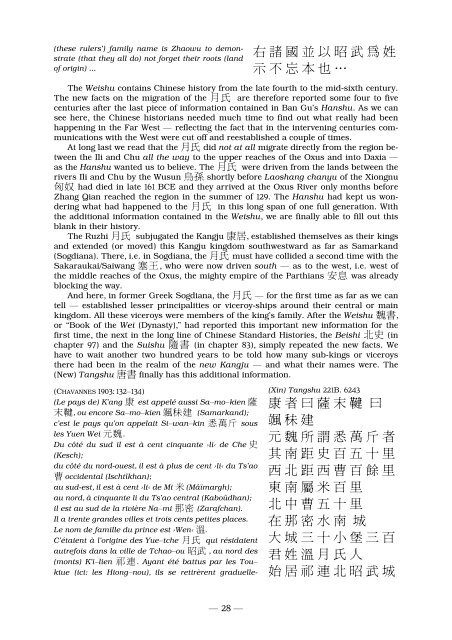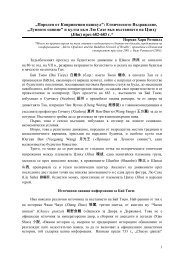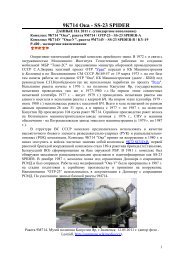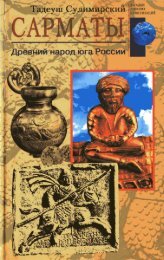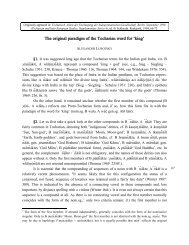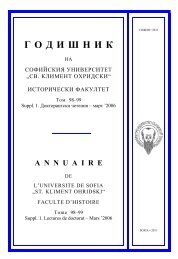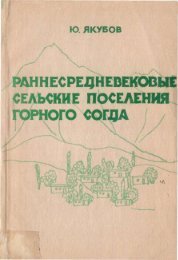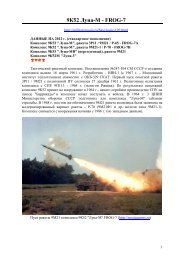You also want an ePaper? Increase the reach of your titles
YUMPU automatically turns print PDFs into web optimized ePapers that Google loves.
右 諸 國 並 以 昭 武 為 姓<br />
gin) ... 示 不 忘 本 也 …<br />
(these rulers’) family name is Zhaowu to demon<br />
strate<br />
(that they all do) not forget their roots (land<br />
of ori<br />
The Weishu contains Chinese history from the late fourth to the mid-sixth century.<br />
The new facts on the migration of the 月氏 are therefore reported some four to five<br />
centuries after the last piece of information contained in Ban Gu’s Hanshu. As we can<br />
see here, the Chinese historians needed much time to find out what really had been<br />
happening in the Far West — reflecting the fact that in the intervening<br />
centuries com-<br />
munications with the West were cut off and reestablished a couple<br />
of times.<br />
At long last we read that the 月氏 did not at all migrate directly<br />
from the region be-<br />
tween the Ili and Chu all the way to the upper<br />
reaches of the Oxus and into Daxia —<br />
as the Hanshu wanted us to believe. The<br />
月氏 were driven from the lands between the<br />
rivers Ili and Chu by the Wusun 烏孫 shortly<br />
before Laoshang<br />
chanyu of the Xiongnu<br />
匈奴 had died in late 161 BCE and they arrived at the<br />
Oxus River only months before<br />
Zhang Qian reached the region in the summer<br />
of 129. The Hanshu had kept us won-<br />
dering what had happened to the 月氏 in this<br />
long span of one full<br />
generation. With<br />
the additional information contained in the Weishu, we are finally able<br />
to fill out this<br />
blank in their history.<br />
The Ruzhi 月氏 subjugated the Kangju 康 居, established themselves as their kings<br />
and extended (or moved) this Kangju kingdom southwestward<br />
as far as Samarkand<br />
(Sogdiana). There, i.e. in Sogdiana, the 月氏 must have collided a second time<br />
with the<br />
Sakaraukai/Saiwang 塞王, who were now dri<br />
ven south — as to the west, i.e.<br />
west of<br />
the middle reaches of the Oxus, the mighty empire<br />
of the Parthians 安息 was already<br />
blocking the way.<br />
And here, in former Greek Sogdiana, the 月 氏 — for the first time<br />
as far as we can<br />
tell — established lesser principalities or viceroy-ships around their central or main<br />
kingdom.<br />
All these viceroys were members of the king’s family. After the Weishu 魏書,<br />
or “Book of the Wei (Dynasty),” had reported this important new information for the<br />
first time, the next in the long line of Chinese Standard Histories, the Beishi 北史 (in<br />
chapter 97) and the Suishu 隨書 (in chapter 83), simply repeated the new facts. We<br />
have to wait another two hundred years to be told how many sub-kings or viceroys<br />
there had been in the realm of the new Kangju — and what their names were. The<br />
(New) Tangshu 唐書 finally has this additional information.<br />
(CHAVANNES 1903: 132–134)<br />
(Le<br />
pays de) K’ang 康 est appelé aussi Sa–mo–kien 薩<br />
末鞬, ou encore Sa–mo–kien 颯秣建 (Samarkand) ;<br />
c’est le pays qu’on appelait<br />
Si–wan–kin 悉萬斤 sous<br />
les Yuen Wei 元魏.<br />
Du côté du sud il est à cent cinquante ›li‹ de Che 史<br />
(Kesch);<br />
i‹ du Ts’a<br />
曹 occidental (Ischtîkhan);<br />
au sud-est, il est à cent ›li‹ de Mi 米 (Mâïmargh);<br />
au nord, à cinquante li du Ts’ao central (Kaboûdhan);<br />
il est au sud de la rivière Na–mi 那密 (Zarafchan).<br />
Il a trente grandes villes et trois cents petites places.<br />
Le nom de famille du prince est ›Wen‹ 溫.<br />
C’étaient à l’origine des Yue–tche 月氏 qui résidaient<br />
autrefois dans la ville de Tchao–ou 昭武 , au nord de<br />
(monts) K’i–lien 祁連. Ayant été battus par les Tou–<br />
kiue (ici: les Hiong–nou), ils se retirèrent graduelle-<br />
(Xin) Tangshu 221B. 6243<br />
du côté du nord-ouest, il est à plus de cent ›l o<br />
康 者 曰 薩 末 鞬 曰<br />
颯 秣 建<br />
元 魏 所 謂 悉 萬 斤 者<br />
其 南 距 史 百 五 十 里<br />
西 北 距 西 曹 百 餘 里<br />
東 南 屬 米 百 里<br />
北 中 曹 五 十 里<br />
在 那 密 水 南 城<br />
大 城 三 十 小 堡 三 百<br />
s 君 姓 溫 月 氏 人<br />
始 居 祁 連 北 昭 武 城<br />
— 28 —


